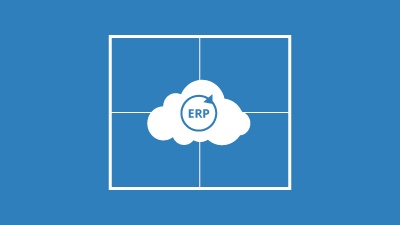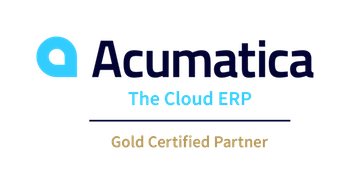Acumatica Named Visionary on Gartner’s Magic Quadrant

While the Enterprise Resource Planning (ERP) world has experienced massive shifts in the past decade, companies in the cloud ERP industry received a shot in the arm in the past two years when Gartner retailored its Magic Quadrant for Cloud Core Financial Management Applications to not only include, but highlight cloud ERP applications.
As the market has evolved, new players have joined the ranks of niche players, challengers, visionaries, and leaders to create a new breed of market leaders. Today, we are excited to share with you the news that Acumatica, a company with whom we have an exclusive partnership, has received the prestigious honor of being named a visionary in the Magic Quadrant for Cloud Core Financial Management Applications.
Understanding Gartner’s Focus on Cloud ERP
This new list, which was refocused in 2017 to recognize the market shift from on-premises to cloud applications, provides an independent and exhaustive review of products available to ERP buyers at midsized, large, and global enterprises. While Gartner formerly avoided discussing the cloud, the market shift has pointed buyers in this direction and by2023, 50% of all new midsize core financial management application projects and 25% of large and global ones will be public cloud implementations. This has changed hot only the market for ERP applications, but has provided users with a trusted resource when selecting new applications, highlighting last year why companies were making the move:
- The ability to keep up to date with new releases (customers are generally forced to stay within one or two releases of the current one)
- A more consumerlike interface
- Improved analytics
- Improved agility, gained through faster introduction of new functionality
- More emphasis on end users (in the office of finance) managing the applications, with less reliance on IT staff
Naturally, the market has evolved alongside Gartner’s expectations and larger companies are taking solace in the cloud as providers demonstrate that ERP is safe, enterprise ready, and able to handle the immense demands of global companies.
The Magic Quadrant for Cloud Core Financial Management Applications
As companies continue to move toward the cloud, the Magic Quadrant began to change in order to represent this market shift, analyzing the following to provide end users and purchasing organizations advice on the following features:
- The functional areas of general ledger (GL), accounts payable (AP), accounts receivable (AR), fixed assets (FA), project accounting, project costing and project billing.
- Financial analytics and reporting capabilities, including provision of financial information (via profit-and-loss statements and balance sheets, for example), and of key performance indicators to managers and executives.
- Basic indirect purchasing functionality (from creating a requisition through to purchase order processing, and AP invoice matching and payment). Many enterprises — especially midsize ones — need some basic procurement functionality within their core financial applications.
What Defined a Cloud Financial Management Application?
Gartner's definition of a cloud service is not associated with a specific technical architecture, such as one involving multitenancy at the application level. Four types of cloud service solution met the inclusion criteria:
- "Born in the cloud" solutions: These are architected from the outset solely as cloud services. They typically have a multitenant application architecture.
- "New generation" solutions: These are architected for multiple deployment models, typically public cloud, private cloud and on-premises. They often support multitenancy at the database or operating system level, and may make use of virtualization techniques.
- Existing solutions that have been substantially rearchitected as cloud services: These are similar to the "new generation" solutions because they also support multiple deployment models (public cloud, private cloud and on-premises). But rather than start from scratch, vendors have made substantial changes to the underlying architecture of existing solutions to support public cloud deployment.
- Existing solutions delivered as public cloud SaaS: These are solutions for which the underlying architecture has not changed significantly, but for which vendors have developed an infrastructure-provisioning layer in order to deliver them within public clouds. (Solutions may also be offered for private cloud, hosted and on-premises environments.)
How Gartner Judges Applications
In order to break down the different cloud vendors, Gartner ranked companies on Completeness of Vision and Ability to Execute.
Completeness of Vision
Gartner assesses vendors' Completeness of Vision by evaluating their ability to articulate their perspectives on the market's current and future direction, to anticipate customer needs and cloud technology trends, and to tackle competitive forces, looking at the following factors:
- Market Understanding: This criterion assesses the vendor's ability to understand customers' needs and relate those needs to products and services. Vendors with a clear vision of their market listen to and understand customers' demands, and can shape or enhance the market. We analyzed vendors' understanding of how the market for core financial management suites is shifting to the cloud and what that means for finance functions.
- Marketing Strategy: This criterion looks for clear, differentiated messaging that is communicated consistently both internally and externally through social media, advertising, customer programs and positioning statements. We analyze how effective a vendor's marketing strategy has been at raising awareness of it in this new and evolving market.
- Sales Strategy: This criterion looks for a sound strategy for selling that uses appropriate networks, including direct and indirect sales, marketing, service and communication networks. It also assesses any partners that extend the scope and depth of the vendor's market reach, expertise, technologies, services and customer base.
- Offering (Product) Strategy: This criterion looks for an approach to product development and delivery that emphasizes market differentiation, functionality, methodology and features in light of current and likely future requirements.
- Business Model: This criterion assesses the suitability of the design, logic and execution of the vendor's business proposition in terms of the likelihood of achieving continued success.
- Vertical/Industry Strategy: This criterion assesses the vendor's strategy to direct resources (sales, product and development), skills and products to meet the specific needs of individual market segments, including industries. Each vendor was assessed on its strategy for service-centric industries where core financial management suites represent the foundation of an ERP strategy. However, as cloud core financial management suites are primarily a cross-industry solution, this criterion has a low weighting.
- Innovation: This criterion assesses direct, related, complementary and synergistic layouts of resources, expertise or capital for investment, consolidation, defensive or pre-emptive purposes. In particular, we analyzed each vendor's strategy for using cloud delivery as a way of bringing innovation to the finance function and to finance processes.
- Geographic Strategy: This criterion assesses the vendor's strategy for directing resources, skills and offerings to meet the needs of areas outside its home region, either directly or through partners, channels and subsidiaries, as appropriate for that region and market. We evaluated each vendor's strategy for providing the localizations and translations required to support multinational and global organizations. We also assessed each vendor's global go-to-market approach.
Ability to Execute
In addition to the analysis of a company’s vision, Gartner looks at another factor: Ability to execute. In this, companies are compared on the following factors:
- Product/Service: Core goods and services offered by the vendor for the defined market. This includes current product/service capabilities, quality, feature sets, skills and so on, whether offered natively or through OEM agreements/partnerships as defined in the market definition and detailed in the subcriteria.
- Overall Viability: Viability includes an assessment of the overall organization's financial health, the financial and practical success of the business unit, and the likelihood that the individual business unit will continue investing in the product, will continue offering the product and will advance the state of the art within the organization's portfolio of products.
- Sales Execution/Pricing: The vendor's capabilities in all presales activities and the structure that supports them. This includes deal management, pricing and negotiation, presales support, and the overall effectiveness of the sales channel.
- Market Responsiveness/Record: Ability to respond, change direction, be flexible and achieve competitive success as opportunities develop, competitors act, customer needs evolve and market dynamics change. This criterion also considers the vendor's history of responsiveness.
- Marketing Execution: The clarity, quality, creativity and efficacy of programs designed to deliver the organization's message to influence the market, promote the brand and business, increase awareness of the products, and establish a positive identification with the product/brand and organization in the minds of buyers. This "mind share" can be driven by a combination of publicity, promotional initiatives, thought leadership, word of mouth and sales activities.
- Customer Experience: Relationships, products and services/programs that enable clients to be successful with the products evaluated. Specifically, this includes the ways customers receive technical support or account support. This can also include ancillary tools, customer support programs (and the quality thereof), availability of user groups, service-level agreements and so on.
- Operations: The ability of the organization to meet its goals and commitments. Factors include the quality of the organizational structure, including skills, experiences, programs, systems and other vehicles that enable the organization to operate effectively and efficiently on an ongoing basis.
Acumatica Named Visionary
In this year’s edition of the Magic Quadrant, Acumatica remained a visionary, due to its focus on the cloud, its flexibility to support extension of the functionality delivered by its partners, and its good core financial management functionality for midsize organizations. It supports 101 countries and one language (English) itself, and another 12 languages through partners. With the highest overall customar satisfaction scores, a focus on midsized enterprises, and a unique API offering, Acumatica continues to improve in the ERP segment, and is expected to move up in the ranks in future years.
To learn more about the Magic Quadrant as a whole, we invite you to receive this free analysis here, sponsored by our friends at Acumatica. As an Acumatica Gold Certified Partner, Cloud 9 ERP Solutions is a leader in helping companies enhance their ecommerce business and has worked with companies just like yours. We invite you to learn more about the challenges facing distribution firms by downloading Cloud ERP In Wholesale and Distribution: Driving Success Across a Wide Network, by reading about the power of Acumatica for distribution firms here, and by contacting us for more information.


